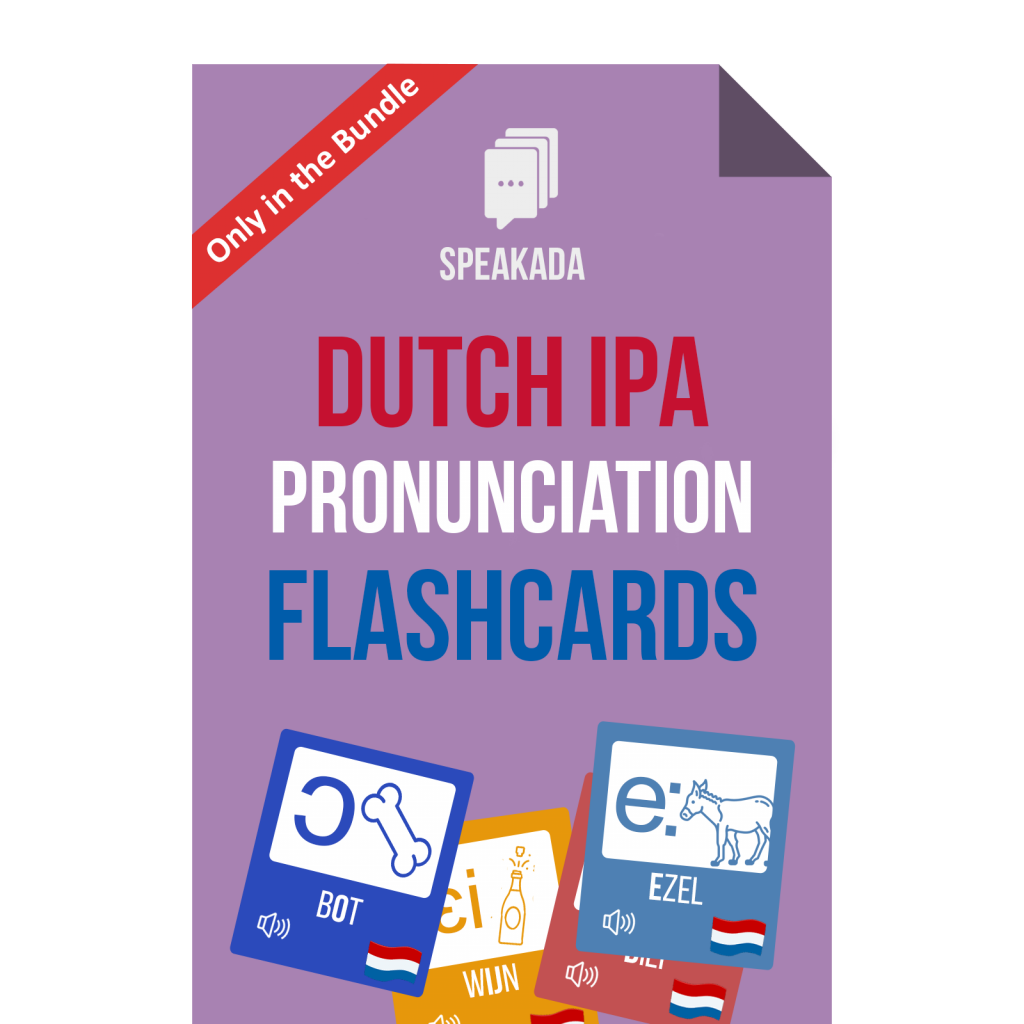How to Speak With a Dutch Accent
When you begin to learn Dutch, there are so many elements that you need to know in order to communicate properly and to be understood by Dutch native speakers. Developing your Dutch accent is just one of them. Failing to have a good Dutch accent means you may be pronouncing words incorrectly and as a result, you may be misunderstood or feel embarrassed. This is why improving your Dutch accent is so important. Learning how to speak with a Dutch accent should be one of the first steps in learning Dutch because it helps you build the foundations of the Dutch language and to minimize any bad habits that you may carry over from your native language into Dutch.
What are Accents?
An accent is the distinct way a person or a group of people pronounce a language. Accents stem from a person’s history, identity and culture.
The first thing to understand is that everyone talks a little bit differently. Take for example when we talk in English, there are so many different ways of speaking English. Whether you’re from New Zealand, Australia, UK or the United States, there are differences in the accent of native speakers. Furthermore, even if we review the English accent in the UK, there are so many different types of accents in the UK itself, depending on the area and people’s social and educational background.
In addition, there are also idiosyncratic aspects of speaking to take into account. Men often talk differently to women. Different age groups speak differently. Also, people with different personalities speak differently and so forth.
Therefore, it’s important that you learn about Dutch accents so that you can proactively choose and speak with a Dutch accent that is the most relevant for you. Also, if you know about the different kinds of Dutch accents, then you can measure and compare yourself against the standard Dutch accent for a given context so that you can communicate well and be understood.
How to Speak With a Dutch Accent in 5 Steps
Now that we understand what is an accent and why accents are important to learn, we can now review how to speak with a Dutch accent using simple methods outlined below:
Step 1: Select Accent
If you want to speak with a Dutch accent then the first thing you should do is choose exactly how you want to speak. Because there are so many different variations of the Dutch accent, it is important to choose what type of Dutch accent you would like to have. This means choosing exactly what you want to imitate, what you want to replicate in your own speech.
Start by listening to a range of Dutch native speakers and narrow down the type of accent you would like to have.
Step 2: Select a Dutch Accent Role Model
The second step is to select a Dutch Accent Role Model. A Dutch Accent Role Model is a specific person you are using as an example or role model to replicate and imitate. This person should be a Dutch native speaker and have an accent that you would like to acquire.
This person may be someone you intimately know, like a partner, parent or friend. If this is not a suitable option, it could also be someone famous or a public figure. It is important to consider a Dutch accent role model who you are able to have access to numerous audios and videos of the person speaking in Dutch. This is important as you will use examples of the Role Model speaking in Dutch to help you speak with a Dutch accent.
Step 3: Shadowing Dutch
The third and final step is to start shadowing Dutch speakers and Dutch “role models” of your choosing. Shadowing is a method that language learners can use to help improve their Dutch accent and Dutch pronunciation. Shadowing in Dutch is essentially all about imitation and replication. You can learn more about the specific method here (link to another article on shadowing).
Start listening to Dutch native speakers all the time and try to pronounce their words and sentences as you hear them. Record yourself speaking the same sentences and listen back to them to hear the differences. When you listen to them, try to pay attention to how they pronounce the words. Try to take notice of the sounds of the vowels, the sounds of the consonants, the way that the intonation patterns flow. Pay attention to the difference between what’s coming out of your mouth and what’s coming into your ears. You should be able to hear the differences between how you speak and how they speak.
You need to be able to listen well to see if you can hear everything. Then, if you’re able to understand everything, that means that your ears are picking up all of the sounds. Your aim is to perceive all the sounds that you can. Overall, it’s a matter of listening to the sounds coming out of your mouth and comparing those sounds that are coming out of the native speaker’s mouth. Then, you’ll notice the deviations so that you can and then align your accent and pronunciation with that of the native speaker.
Step 4: Ongoing Accent Practice
Next, it’s all about practicing your accent and pronunciation. At the end of the day, producing sounds with your mouth is a physical skill just like riding a bicycle or learning to swim. Your Dutch accent is a skill that can be practiced and learned. So, you need to do the physical practice in order to get it right. It is a matter of experimenting by moving around your tongue, moving around your jaw, moving around your throat – until everything sounds like what you hear from a Dutch native speaker.
Step 5: Fine-Tuning Your Dutch Pronunciation
If you’re still having trouble learning and practicing all of the Dutch sounds, then you can also take advantage of audio-based flashcards. You can use these on your computer or phone, and they’re a great way to improve your Dutch accent incrementally and consistently.
We suggest using Anki, which is a powerful and free flashcards software. Anki comes with a super-useful spaced repetition algorithm, which is based on proven research about how our brains and memories work. You could use Anki and Dutch pronunciation flashcards to help fine-tune your Dutch accent over time.
I’m Still Having Trouble With My Dutch Accent?
If you have been shadowing Dutch for 6 months or more, your accent should get very good. However if you are still struggling and it is still not working, at that point you may need to go back to the basics of Dutch pronunciation. This means studying the foundations of Dutch sounds through the Dutch alphabet, Dutch IPA, and Dutch minimal pairs.
Fortunately, there are already pre-made Anki flashcards for the Dutch Alphabet, Dutch IPA Pronunciation, and the Dutch Minimal Pairs. These will save you a lot of time trying to make these specialized audio-flashcards for yourself. All of these are geared to improve your Dutch accent. After just a few weeks or months, you’ll discover that you’ll be able to perceive sounds you could not hear properly before, and then your mouth and tongue will be able to enunciate Dutch sounds better. You’ll also find that you will be able to self-correct your pronunciation mistakes. With Anki’s spaced repetition algorithm, you’ll be able to remember proper pronunciations in your long-term memory so you can continue learning Dutch with greater ease.
If after all of this, you are still having problems with your Dutch accent and do not know how to speak with a Dutch accent, then you may need to look into potential speech impediments and whether you think this may be the problem. If you believe this is the problem you can go about fixing your speech impediment the same way Dutch native speakers with speech impediments go about addressing this. Speaking to a speech specialist or a specialized Dutch accent coach at this point may be helpful.
You May Also Like
More Anki Dutch Articles

Best Dutch Anki Decks 2024 That You Need Now

How to Learn Dutch Vocabulary

How to Use Anki for Dutch

Mastering Dutch Made Easy: Step-By-Step Guide for How to Learn Dutch Now

How Long Does It Take to Learn Dutch Now











